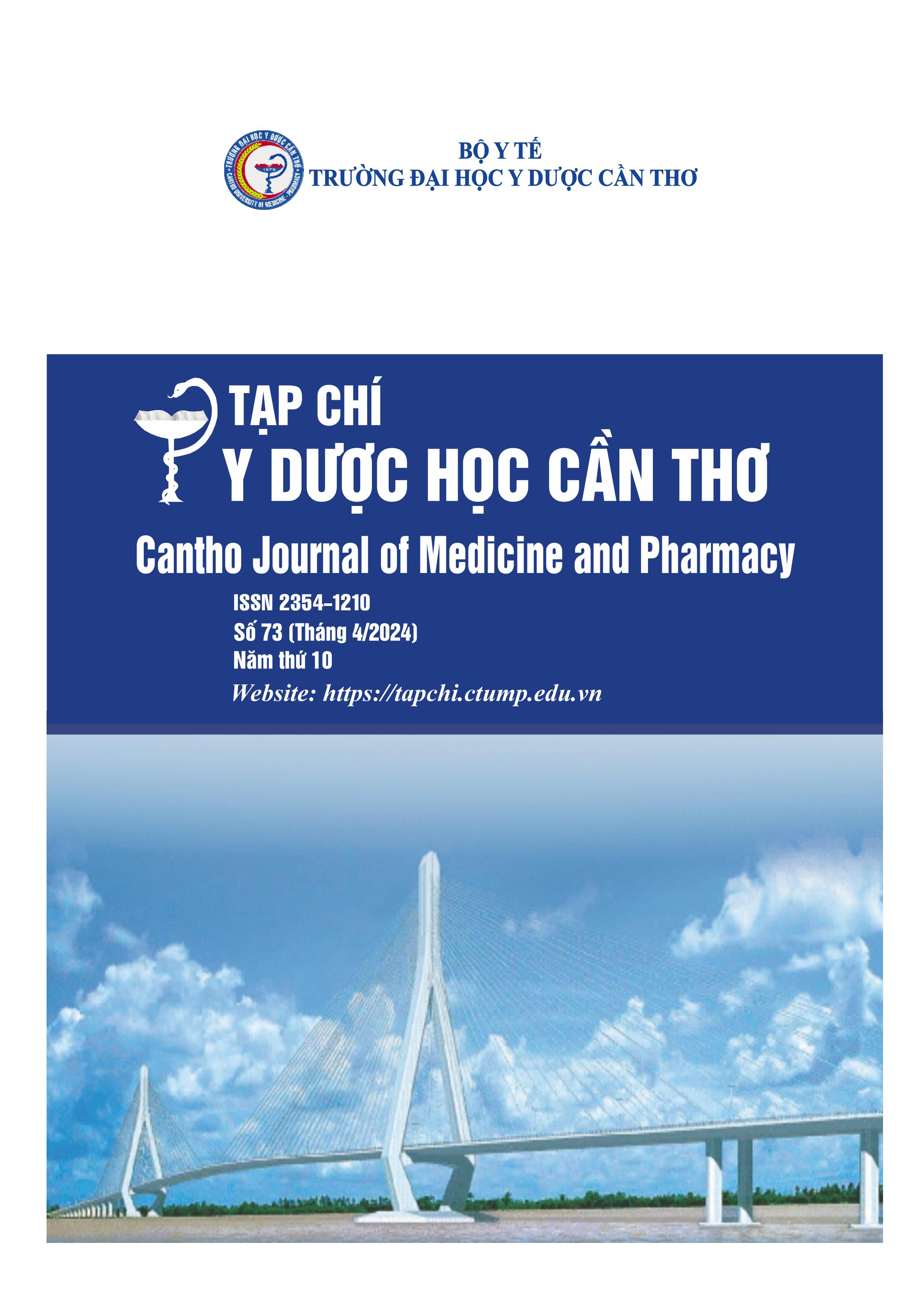STUDY ON THE SITUATION OF CALCIUM SUPPLEMENTATION OF PHARMACY STUDENTS AT CAN THO MEDICAL COLLEGE IN 2022-2023
Main Article Content
Abstract
Background: Calcium is an important mineral to replenish throughout life. Calcium deficiency can cause fatigue, dizziness, muscle weakness, decreased concentration,…. According to Medical Clinic of Can Tho Medical College, the number of students with symptoms of hypocalcemia in 2021-2022 period is 16 cases, with an average of 1-2 cases per month affecting students' learning and working processes. The current rate of calcium supplementation of students and how to reduce the rate of low calcium expression in students were necessary to research . Objectives: To evaluate of calcium supplementation status of Pharmacy students at Can Tho Medical College in 2022-2023. Materials and methods: Cross-sectional descriptive study on 1025 Pharmacy students at Can Tho Medical College. Results: In 1025 students, the rate of calcium supplementation was 33.85%, calcium supplementation single was 15.41% and combined calcium supplementation accounted for 18.44%. Supplementing calcium from dietary supplements accounted for 58.2%. The case of students taking calcium supplements without medical staff's indications was 35.2% and with indications was 21.9%. The most reason why students did not supplement calcium was found that their body condition was enough without calcium supplementation with the rate of 53.2%. Conclusions: The rate of calcium supplementation is still low, calcium is mainly supplemented in the form of functional foods and is not indicated by medical staff. The most common reason why students did not take calcium supplements is that they find their body condition is enough without calcium supplements.
Article Details
Keywords
Calcium, supplements, vitamin D, hypocalcemia
References
2. Tom R. Hill, Sjors Verlaan, Egbert Biesheuvel, Richard Eastell, Jürgen M. Bauer, et al. A
Vitamin D, Calcium and Leucine-Enriched Whey Protein Nutritional Supplement Improves Measures of Bone Health in Sarcopenic Non-Malnourished Older Adults: The PROVIDE Study. Calcif Tissue Int. 2019. 105(4), 383-391, https://doi.org/10.1007/s00223-019-00581-6.
3. Liu C, Kuang X, Li K, Guo X, Deng Q, et al. Effects of combined calcium and vitamin D supplementation on osteoporosis in postmenopausal women: a systematic review and metaanalysis of randomized controlled trials. Food Funct. 2020. 11(12), 10817-10827, https://doi.org/10.1039/d0fo00787k.
4. Thanapluetiwong S, Chewcharat A, Takkavatakarn K, Praditpornsilpa K, Eiam-Ong S, et al. Vitamin D supplement on prevention of fall and fracture. A Meta-analysis of Randomized Controlled Trials. Medicine (Baltimore). 2020. 99(34), e21506, https://doi.org/10.1097/MD.0000000000021506.
5. Chu H, Qin Z, Ma J, Xie Y, Shi H, et al. Calcium-Sensing Receptor (CaSR)-Mediated Intracellular Communication in Cardiovascular Diseases. Cells. 2022. 11(19), 3075, https://doi.org/10.3390/cells11193075.
6. Shah K, Seeley S, Schulz C, Fisher J, Gururaja Rao S. Calcium Channels in the Heart: Disease States and Drugs. Cells. 2022. 11(6), 943, https://doi.org/10.3390/cells11060943.
7. Blerina Shkembi, Thom Huppertz. Calcium Absorption from Food Products: Food Matrix Effects. Nutrients. 2021. 14(1), 180, https://doi.org/10.3390/nu14010180.
8. Connie M Weaver. Calcium. Advances in Nutrition. 2019. 10(3), 546–548, https://doi.org/10.1093/advances/nmy086.
9. Hanna RM, Ahdoot RS, Kalantar-Zadeh K, Ghobry L, Kurtz I. Calcium Transport in the Kidney and Disease Processes. Front Endocrinol (Lausanne). 2022. 12, 762130, https://doi.org/10.3389/fendo.2021.762130.
10. Shlisky J, Mandlik R, Askari S, Abrams S, Belizan JM, et al. Calcium deficiency worldwide:
prevalence of inadequate intakes and associated health outcomes. Ann N Y Acad Sci. 2022. 1512(1), 10-28, https://doi.org/10.1111/nyas.14758.


